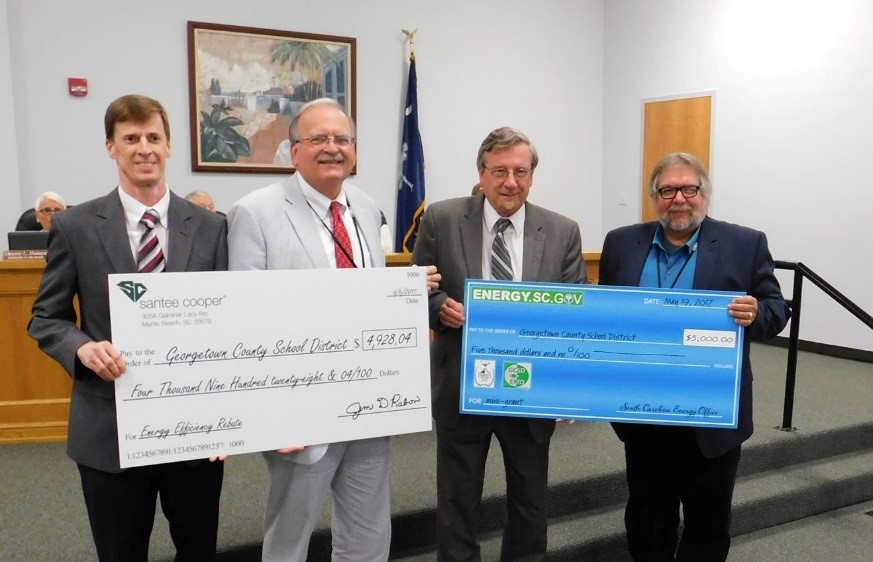Georgetown County School District (GCSD) installed 45 LED bulbs as a test case for a science class at Waccamaw High School. The test classroom showed the lights were brighter and used less energy. The project also demonstrated how the utility rebate program worked.
Seeing success and savings from the project, GCSD applied for and received a mini-grant from the Office of Regulatory Staff Energy Office (Energy Office) in late 2016 to retrofit more of the lighting in Waccamaw High School. GCSD also made the investment to match the $5,000 mini-grant with district funds to bolster the scope of the project and convert more lighting.
“There’s three bulbs in each fixture with two different switches. One switch for the middle single lamp and one for the two outside bulbs. Since the brightness has increased, the classes only use one switch to turn the two outside lamps on, saving even more energy.”

-Tony Holcomb
Maintenance Coordinator
Georgetown County School District
The school district originally planned to replace 300 of the 34 watt T12 fluorescent bulbs with 15 watt LED bulbs. The T12 bulbs only last for about 2 years, whereas the LED bulbs last about 5 years.
BUYING IN BULK
After receiving the mini-grant, GCSD’s procurement team contacted several vendors to find the best pricing for the new LED bulbs. The cost of the bulbs was reduced due to the large order, allowing the district to increase the amount of bulbs they would replace to 800 bulbs.
IN-HOUSE INSTALLATION
The new LED bulbs were installed with in-house labor, providing the district with even more savings. The
Facilities Electrical Department started work after 4 p.m. when school was dismissed as to not interrupt educational time for the students. Workers were able to install the bulbs in a timely manner without replacing the fixtures, saving even more money.
UTILITY REBATE
After the installation was completed in the spring of 2017, GSCD applied for Santee Cooper’s lighting rebate program. Santee Cooper’s rebate program paid back the district’s investment by providing a $4,928 rebate.

The mini-grant and Santee Cooper rebate covered the cost of the LED bulbs and in-house labor, with $71.97 to spare. With annual energy savings of $7,390.32, the new LED bulbs are projected to pay for the project in approximately one and a half years.



